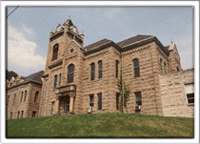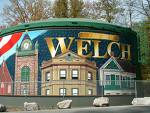Historic City of Welch
City of Welch
Welch was incorporated in 1894 and named after Isaiah A. Welch, a captain in the Confederate Army. On August 1, 1921 detectives from the Baldwin-Felts agency killed Matewan Sheriff Sid Hatfield as well as Ed Chambers at the McDowell County Courthouse located in Welch.
Welch was once a prosperous city during the coal mine boom of the early 20th century. Once the boom ended, the city fell on hard times. When presidential candidate John F. Kennedy visited Welch by train in 1960, he saw a city that was seriously decaying and had a very high poverty rate caused by the declining coal mining industry. It was his visit here that was believed to be the basis of the aid brought to the Appalachian region by the Kennedy and Lyndon Johnson administrations. The first recipients of food stamps were the Chloe and  Alderson Muncy family of Welch. The family, which included fifteen children, received $95 worth of stamps from Secretary of Agriculture Orville Freeman on May 29, 1961 as a crowd of reporters watched.
Alderson Muncy family of Welch. The family, which included fifteen children, received $95 worth of stamps from Secretary of Agriculture Orville Freeman on May 29, 1961 as a crowd of reporters watched.
Firsts for Welch
- Welch is the location of the first memorial building erected in the United States to the memory of the veterans of World War I. It was dedicated on May 30, 1923.
- In 1928, Welch resident Minnie Buckingham Harper became the first black woman legislator in the United States. Harper was appointed by the Governor to the West Virginia House of Delegates to fill the vacancy caused by the death of her husband.
- Welch also built the first municipally owned parking building in the United States, which was opened September 1, 1941. It accommodated 232 cars and showed a profit its first year in operation.
- Welch is a key place in the memoir "The Glass Castle" by Jeannette Walls. The family lived at 93 Little Hobart Street.